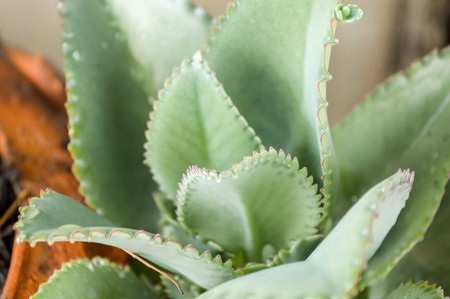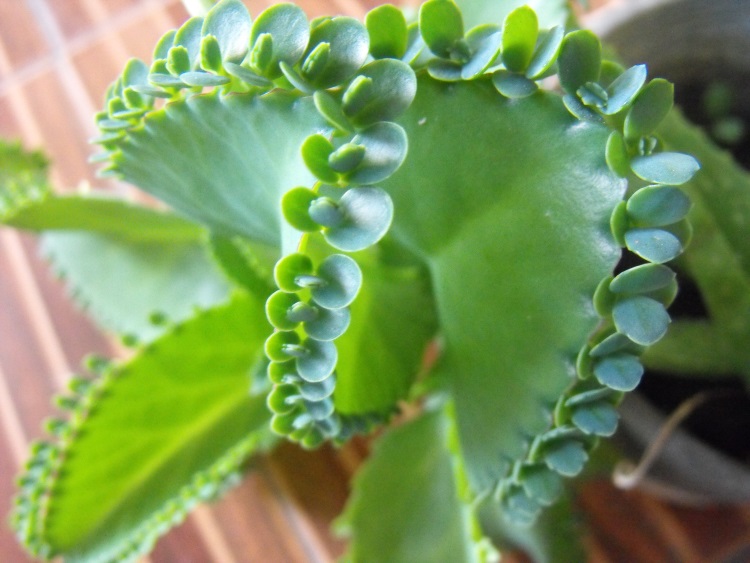





The kalanoche is very tolerant to temperatures. It can grow in very dry conditions and doesn't require much care.
Flowering: The Mother of thousands develop small cluster of flowers, arranged on the stems. However, the flowering doesn't occur on a regular basis and sometimes might not occur at all. If the flowering happens it will take place at the beginning of a warm season and produce small, grayish lavender flowers. After the flowering, the main plant dies and births small plantlets, which can drop and grow new plants wherever it lands. That's why it is best to keep the kalanoche away from other plants and grow it in separate pots.
Foliage: It has long, fleshy, oblong leaves, which grow up to 20 cm long and 3.2 cm wide. They are green on the top and slightly purple underneath. The edges of the leaves have small bulbs, which contain plantlets. These can turn into roots, while still attached to the plant.
Displaying and growing: Mother of thousands can also be called an 'evil genius' because it can not only grow everywhere, but when grown with other cactuses it 'shares' the same spine with them. It is best to grow it in a terracotta pot with a drainage hole , not with other plants as it is hard to control it and stop it from spreading. During the warm moths it is fine to display it outside.

Plantlets For Propagation

Mother of thousands is one of the easiest plants to care for, but problems do occur. Remember that the plant is poisonous!
Mealy bugs: You can get rid of them by wiping the leaves with a cotton ball dipped in alcohol.
Aphids: Remove by hand.
Stem rot: As with most succulent plants if you overwater and/or allow the temperatures to become too low the stems will rot. this will kill the plant easily.
If you notice that your plant has been infected by insects/bugs, separate it from other plants immediately.
Copyright © www.100flowers.win Botanic Garden All Rights Reserved